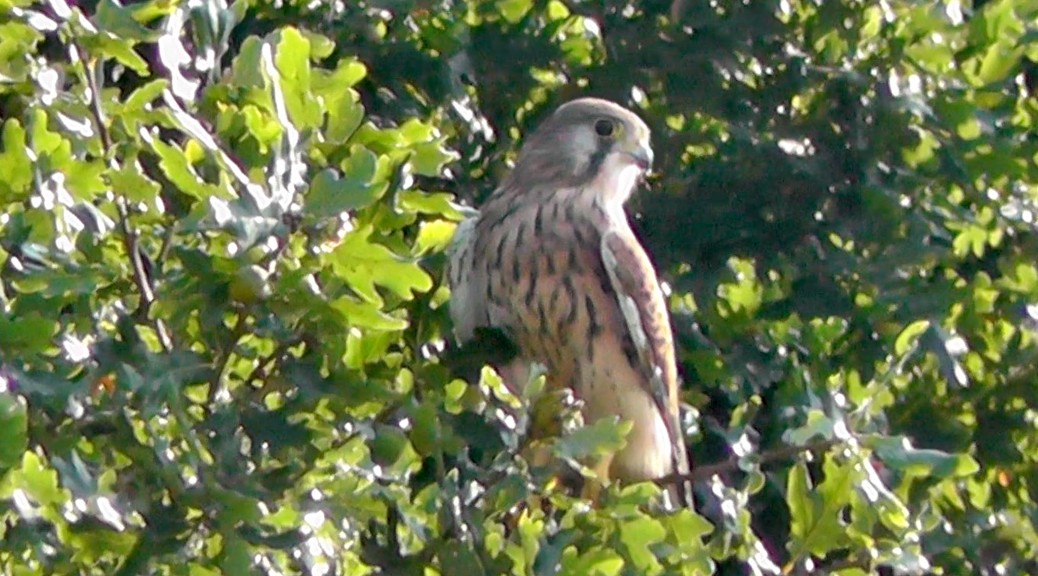2023 update to your local bird knowledge by Tim Rymer, a regular birdwatcher in the Park
I’ve been visiting Shrewsbury Park regularly since early 2017, bringing my binoculars whilst walking the dogs. If you see me do stop to ask me what’s about. The park has plenty of birdlife, with something to be seen or heard throughout the year. You are unlikely to miss common and obvious species such as Woodpigeon, Carrion Crow and Ring-necked Parakeet, and with a bit of patience you will see other common birds like Robin, Wren, Dunnock, Blackbird, Blue Tit and Great Tit. Other resident species include Nuthatch, Green Woodpecker, Great Spotted Woodpecker, Song Thrush, Stock Dove, Goldcrest and even a pair of rather elusive Bullfinch. Add to that a range of summer and winter visitors, and birds just passing through or flying over.
Recent highlights have included overwintering Firecrest, first seen in 2021/22, and again 2022/23, with six present together last October. Two Woodcock have been flushed from leaf litter including one I came across last Christmas morning. The pair of Tawny Owl sadly seem to have deserted the park since 2021, but there are regular sightings of Sparrowhawk and Buzzard, and occasionally Peregrine Falcon and even Hobby, an uncommon summer visitor which has bred locally.
In winter look out for Redwing, flocking together feeding on berries, and possibly Fieldfare too. Redpoll can appear in cold weather, sometimes amongst a Goldfinch flock. In spring listen out for warblers – Chiffchaff and Blackcap arrive from their wintering grounds from late March, and a Willow Warbler can occasionally be heard singing as it stops a day or two on its migration journey. The most unexpected summer migrant I have come across is a Cuckoo, singing from the old allotments early one April morning before moving on. Get to the park early and listen – the dawn chorus can be an incredible experience.
Summer can be quieter, as birds are paired up and often elusive in dense foliage and undergrowth, but look up for Swifts, and raptors such as Buzzard and Sparrowhawk. Late summer, like spring, brings the possibility of passage migrants – so there’s every chance of adding to the park’s bird list. Nearby sites like Woolwich Common have seen Whinchat, Wheatear, Redstart and Meadow Pipit in recent times, and there are many excellent birding sites along the Thames including at Crossness where many other species can be seen.
For more information about what’s been seen in London recently the London Bird Club wiki and Twitter hashtag #londonbirds are worth checking.
Below is an updated species list 2023, building on one originally compiled by John Beckham, former Head Ranger of Parks and Open Spaces, from his birdwatching in Shrewsbury Park and old allotments. If you see any of these birds, send us a photo!
- Goldfinch
- Chaffinch
- Greenfinch
- Bullfinch
- Lesser Redpoll
- Siskin
- Goldcrest
- Firecrest
- Starling
- Blackbird
- Song Thrush
- Mistle Thrush
- Redwing
- Fieldfare
- Magpie
- Carrion Crow
- Jackdaw
- Jay
- House Sparrow
- Blue Tit
- Great Tit
- Coal Tit
- Long-tailed Tit
- Feral Pigeon
- Woodpigeon
- Stock Dove
- Collared Dove
- Robin
- Wren
- Dunnock
- Pied Wagtail
- Nuthatch
- Treecreeper
- Green Wooodpecker
- Great Spotted Woodpecker
- Ring – necked Parakeet
- Cuckoo
- Kestrel
- Sparrowhawk
- Buzzard
- Hobby
- Peregrine Falcon
- Tawny Owl
- Chiffchaff
- Blackcap
- Willow Warbler
- Swift
- Swallow
- House Martin
- Pheasant
- Red-legged Partridge
- Woodcock
- Herring gull
- Black-headed gull
- Lesser black-backed gull
- Mallard
- Greylag goose
- Cormorant
- Grey heron

